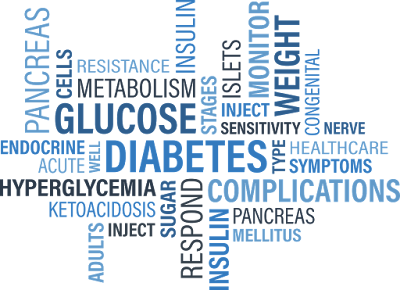Hypertension and high blood pressure, causes, diagnosis, treatment
Hypertension and high blood pressure
Blood pressure is the measure of the force that's applied by blood to
the walls of the arteries as it's pumped through the body by the heart.
It's normal for blood pressure to fluctuate throughout the day depending
on a wide range of factors including whether you're resting or active, your
age, mood, general health and what kinds of medication you're taking.
High blood pressure
can't be diagnosed from a single blood pressure reading. However, if readings
are persistently higher than what's considered a safe level, then your GP may
diagnose you as having high blood pressure, known medically as hypertension.
About blood pressure
Blood carrying
oxygen and nutrients is pumped around your body by your heart. Two major
factors determine blood pressure: the force and volume of the blood and the
size and flexibility of the arteries.
You can get high
blood pressure if the walls of your arteries lose their elasticity, become
narrowed or contract too much, if your heart is pumping too much blood or if
you have too much blood in circulation.
About one in 10
adults in Australia are estimated to have high blood pressure. This may be
underestimating its impact on the population as this is based on self-reported
data. An earlier study that measured the blood pressure of participants found
that almost one in three men and one in four women over the age of 25 had high
blood pressure or were on medication for hypertension.
Measuring blood pressure
Blood pressure is
measured using a device called a sphygmomanometer (sphygmo = pulse, manometer =
pressure measure) or with a blood pressure cuff which is connected to a
pressure gauge. These measure the blood pressure in units called millimetres of
mercury (mmHg). The pressure is then expressed by two numbers that correlate to
two different readings from the gauge.
To measure blood
pressure, the inflatable cuff is wrapped around your upper arm, over a major
artery called the brachial artery. The cuff is then pumped up until it's tight
enough to block the blood flow.Once the blood flow has stopped, the air in the cuff is let out slowly and a doctor or nurse listens to the artery with a stethoscope. The moment they hear the first pulsing of the artery as blood flow resumes, a reading is taken from the gauge - this reading is known as the systolic pressure. It indicates the pressure in your arteries as the blood is squeezed out.
The pressure at which the pulsation finally stops forms the second reading. Known as the diastolic pressure, it indicates the pressure in your arteries when the heart relaxes between beats.
The blood pressure is then expressed as two figures, one over the other. The top or first figure is the systolic pressure, the bottom or the second is the diastolic:
- Systolic blood pressure. This is a measure of the pressure in your arteries when your heart muscle is contracted and pumping blood.
- Diastolic blood pressure. This is the pressure between heart beats when your heart is resting between beats and filling with blood.
Both systolic and
diastolic measures are important. Until recently, it was believed that the
bottom, or diastolic, reading was the most important and there was no real
cause for concern if the systolic pressure was higher than average as long as
the diastolic level was low. However, it's now known that having a high
systolic reading may mean a higher risk of various hypertension-related
conditions. This is especially true for older people.
Symptoms of high blood pressure
If you have very
high blood pressure, or your blood pressure rises quickly, you may have
headaches, problems with your vision, fits or black-outs.
However, most
people generally don't have any symptoms that can be felt. The best way to know
if you have high blood pressure is to have it tested regularly.
The effects of high blood pressure
For people with
high blood pressure, increased resistance in the arteries means a strain on the
heart muscle as it has to work harder to pump the blood around the body.Damage to the
organs due to uncontrolled hypertension is called end-organ damage. If you have
long-term high blood pressure, you have an increased risk of major illnesses
including:
- cardiovascular disease, such as angina (chest pain caused by reduced blood flow), stroke, heart attack, heart failure or atrial fibrillation (irregular heart beat)
- kidney damage
- possible brain or nerve damage
- impaired sight due to retinal damage in the back of the eyes.
Once you've been
diagnosed with high blood pressure, proper treatment may help prevent you from
developing some of the adverse effects mentioned above. So it's important that
people with high blood pressure take their prescribed medications as directed,
even when they may feel fine.
Causes of high blood pressure
Primary hypertension
More than nine in
10 people with high blood pressure have what's called primary or essential
hypertension. This means it has no single clear cause.
Many factors to do
with your lifestyle may contribute to primary hypertension. These include:
- smoking
- being overweight or obese
- drinking a lot of alcohol - especially if you binge drink
- lack of exercise
- unhealthy diet - especially if it's high in salt and saturated fat
- a family history of high blood pressure - if someone else in your family has the condition you have a higher risk of developing it.
Secondary hypertension
Around one in 20
people with high blood pressure have secondary hypertension. This means your
doctor can link your high blood pressure to a known cause such as-
- kidney disease
- endocrine disease (hormone disorders - a hormone is a regulatory chemical that occurs naturally in your body)
- a narrowing of the aorta (the largest artery leading from the heart) or the arteries leading to the kidneys.
- Secondary hypertension can also be caused by:
- steroid medicines
- the contraceptive pill
- pregnancy, which can cause pre-eclampsia - this can be serious and harm your baby.
Diagnosis of high blood pressure
Normal blood
pressure can vary somewhat from person to person according to many factors.
What's in the high-normal range for one person may be considered high in a
person with diabetes, for example.
However, The
National Heart Foundation offers a general guide:
Normal blood pressure
|
generally less than 120/80 mmHg
|
Normal-to-high blood pressure
|
between 120/80 and 140/90 mmHg
|
High blood pressure
|
140/90 mmHg or higher
|
Very high blood pressure
|
180/110 mmHg or higher
|
- a urine test - protein in your urine may be the first sign of a kidney problem
- a blood test - to check your cholesterol and blood sugar levels, as well as the condition of your kidneys
- an electrocardiogram (ECG) - a test that measures the electrical activity of your heart to see how well it's working.
If you
have diabetes, kidney disease or cardiovascular disease, your blood pressure
should be lower than this - ideally less than 130/80.
Your GP may take
your blood pressure as part of a medical examination. That's one good reason to
have a regular check-up, especially if you're over 40.
Your GP may ask you
to come back for repeat measurements over a number of weeks before suggesting
you have treatment. This is so they can check that the high reading is an
ongoing problem and not a one-off.
You may also need
some tests to see if high blood pressure is affecting the rest of your body.
These may include:
Monitoring
If your GP thinks
you have ‘white coat syndrome' - this means you only record high blood pressure
levels when a doctor or nurse measures your blood pressure in the surgery - you
may have your blood pressure monitored for 24-hours. A monitoring device is
strapped round your waist and attached to a cuff wrapped around your upper arm.
The cuff inflates and deflates automatically throughout the 24 hours and takes
recordings of your blood pressure. Your doctor may also use 24-hour blood
pressure monitoring used to find out what your blood pressure is overnight.
You might consider
getting a blood pressure monitor to use yourself at home - discuss this with
your GP.
It's important to
take readings on different days - for example you shouldn't just measure your
blood pressure when you feel stressed. Set days in the week to take the
measurement and monitor around the same time each day so that you can get a
consistent reading.
You should continue
to have your blood pressure tested regularly by your GP, even if you use a
blood pressure monitor at home.
Treatment of high blood pressure
You're likely to
need long-term treatment for high blood pressure because it can't usually be
cured.
If you have very
high blood pressure, you may need to go to hospital for treatment. But it's
much more likely that your GP and/or a district nurse or carer will look after
you.
Self-help
Your GP, nurse or
carer will talk to you about lifestyle changes which might help. For example,
they may advise you to:
- quit smoking
- maintain a diet low in saturated fat and salt that includes plenty of fruit and vegetables
- cut down on alcohol to recommended levels or below
- cut down on coffee and high-caffeine drinks, such as cola
- take regular, moderate-intensity exercise
- lose any excess weight and maintain a weight that is healthy for you.
- It may also help to try to reduce the stress in your life to prevent short-term rises in blood pressure - try relaxation techniques or meditation.
Medicines
If your blood
pressure stays high, your GP may prescribe you one or more of the following
antihypertensive medicines:
- ACE inhibitors or angiotensin-II receptor antagonists. These relax and widen the walls of your blood vessels by reducing the production of hormones that cause your blood vessels to tighten
- calcium-channel blockers. These help to widen your blood vessels by relaxing the muscles in your blood vessel walls
- diuretics. These increase the amount of water and salt removed from your blood by your kidneys - lowering the volume of your blood which reduces blood pressure
- beta-blockers. These reduce the work your heart has to do by reducing your pulse rate and the force of contraction of your heart at rest and when you exercise
- alpha-blockers. These help to widen your blood vessels by relaxing the muscles in the blood vessel walls.
- The medicines your GP prescribes will depend on a number of factors, including your age and any other medical conditions you may have and medicines you may be taking. It may take time to find the best treatment for you; one that balances benefits against any side effects.
It's important to
take your medicines every day even if you don't have any symptoms of high blood
pressure.
Special considerations of high blood
pressure
Pregnancy
If you're pregnant
your blood pressure is monitored regularly, whether you have hypertension or
not. Long-term high blood pressure may be picked up at an antenatal
appointment. It's also possible that you may develop high blood pressure during
your pregnancy (gestational hypertension). High blood pressure that develops
after 20 weeks of pregnancy can mean you have pre-eclampsia, which can be
harmful for you and your baby.
If you have high
blood pressure and think you may be, or are trying to become pregnant, it's
important that you tell your GP. Certain medicines for treating high blood
pressure aren't suitable for pregnant women.




iHealth Ease Wireless Smart Bluetooth Upper Arm Blood Pressure Monitor Compatible with iPhone and Android device-13% OFF
ReplyDelete